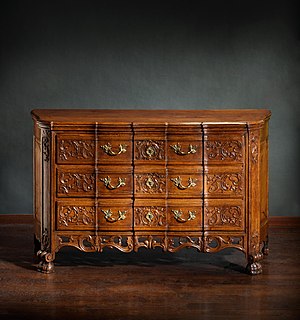 W
WA chest of drawers, also called a dresser or a bureau, is a type of cabinet that has multiple parallel, horizontal drawers generally stacked one above another.
 W
WA chifforobe, also chiffarobe or chifferobe, is a closet-like piece of furniture that combines a long space for hanging clothes with a chest of drawers. Typically the wardrobe section runs down one side of the piece, while the drawers occupy the other side. It may have two enclosing doors or have the drawer fronts exposed and a separate door for the hanging space.
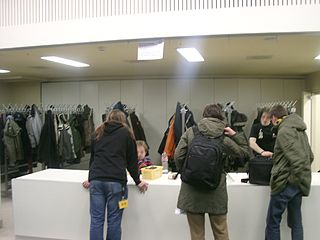 W
WA cloakroom, or sometimes coatroom, is a room for people to hang their coats, cloaks or other outerwear when they enter a building. Cloakrooms are typically found inside large buildings, such as gymnasiums, schools, churches or meeting halls. In smaller buildings, people may hang their own coats, but in large buildings or complexes, coatcheck attendants may take the coats. In some venues, such as nightclubs, using the cloakroom's coat check service is mandatory.
 W
WA closet is an enclosed space, with a door, used for storage, particularly that of clothes. "Fitted closet" are built into the walls of the house so that they take up no apparent space in the room. Closets are often built under stairs, thereby using awkward space that would otherwise go unused.
 W
WA clothing bin is a container in which clothing is placed to be donated to charity organizations or for recycling in other ways. They are typically provided by the charities themselves or by local authorities.
 W
WA drawer DROR is a box-shaped container that fits into a piece of furniture in such a way that it can be drawn out horizontally to reach its contents. Drawers are built into numerous types of furniture, including cabinets, chests of drawers (bureaus) and the like.
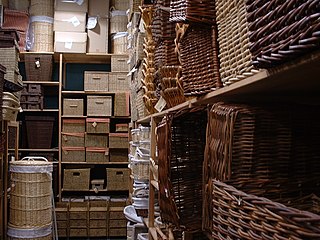 W
WA hamper refers to one of several related basket-like items. In primarily British usage, it refers to a wicker basket, usually large, that is used for the transport of items, often food. In North America, the term generally refers to a household receptacle, often a basket, for clean or dirty clothing, regardless of its composition, i.e. "a laundry hamper". Typically a laundry hamper is used for storage and will be sturdier, taller and have a lid while a laundry basket is open and used mainly for transport.
 W
WTraditionally, a linen-press is a cabinet, usually of woods such as oak, walnut, or mahogany, and designed for storing sheets, table-napkins, clothing, and other textiles. Such linen-presses were made chiefly in the 17th, 18th, and 19th centuries and are now considered decorative examples of antique furniture. Early versions were often quite plain, with some exhibiting carving characteristic of Jacobean designs. Examples made during the 18th and 19th centuries often featured expensive veneers and intricate inlays, and were designed to occupy prominent places in early bedrooms as storage closets for clothing.
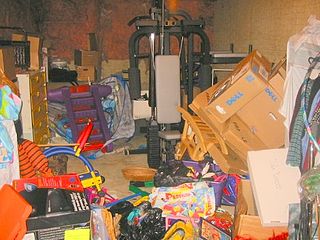 W
WProfessional organizing emerged as an industry in 1984 within Los Angeles. A professional organizer assists individuals and businesses to improve their organizing systems and process.
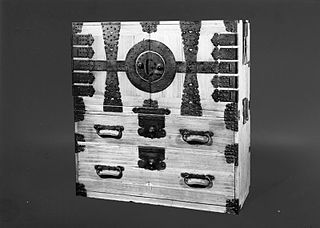 W
WTansu (箪笥) is the traditional mobile storage cabinetry indigenous to Japan. Tansu was first recorded in the Genroku era of the Edo period (1688–1704). The two characters, tan and su, appear to have initially represented objects with separate functions: the storage of food and the carrying of firewood. Since the radical for bamboo appears in each of these characters, it may be conjectured that wood was not as yet used.